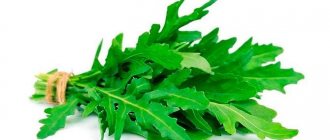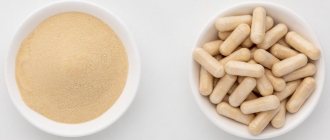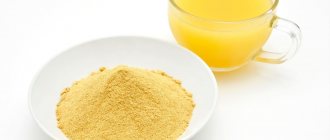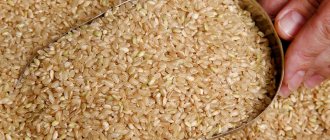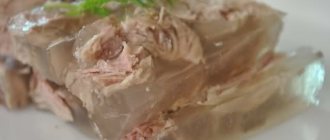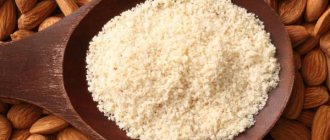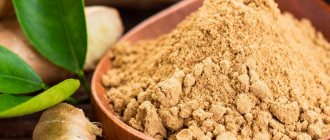What is pectin and what is it like?
Strictly speaking, there is no single pectin. Pectins (or pectic substances) are a whole group of polysaccharides formed by galacturonic acid residues. It is the polysaccharides contained in products that are responsible for texture: for example, hardness, density or, on the contrary, viscosity.
Pectins are found in vegetables, all fruits and some herbs. There are especially many of them in pumpkin, potatoes, tomatoes, cabbage, quince, lingonberries, gooseberries, as well as grapefruits, lemons, red and black currants, plums and, of course, apples. Actually, pectins are mostly produced from apples and citrus fruits, but in the world there is also the production of pectins from sugar beet pulp and a sea grass called eelgrass (this, by the way, is not an algae).
In small quantities, pectins act as thickeners, in large quantities - as a gelling agent like gelatin and agar-agar.
In the food industry, all pectins are designated with the code E440. So don’t be afraid of this additive on the label of gummy bears or marshmallows - they were made from completely natural ingredients.
Types by degree of esterification
Pectins are divided into several types according to the degree of esterification (that is, the strength of interaction with alcohol and acid). The higher this degree, the faster the pectin gels and the higher the temperature it can withstand.
Highly esterified pectins (label designation HM)
– substances that can gel at high acidity. At the same time, they will need a large amount of sugar or other dry substances for gelling. These are the most common pectins that are used by confectioners every day and with the help of which large batches of marmalade, marshmallows, marshmallows, etc. are produced.
Low esterified pectins (LM)
- these are pectins that are less dependent on acidity, but work only in the presence of calcium ions.
Amidated pectins (LMA)
– low-esterified pectins, which were treated with ammonia during the production process, which slightly changed their composition. But they begin to work with less calcium.
Low esterified pectin NH
also called reversible, meaning it can withstand heating and cooling without losing its gelling properties. It can be a tool for culinary experiments, as it is combined with agar-agar and gelatin.
Pectin FX58
– a special type of pectin with a low degree of esterification, suitable only for products with a high calcium content (milk and its derivatives).
Acid free pectin
contains calcium sulfate, is the most hygroscopic of all pectins and is suitable for berries and fruits that do not contain acids.
The chemistry of the process looks complicated only at first glance, but in reality choosing the required type of pectin is quite easy. Here's what Irina says about this:
– You need to understand why pectin is bought. If for jam, then apple or citrus is suitable: these types of pectin are highly esterified, their principle of action is based on a large amount of dry matter in the conditional jam and high acidity. That is, such pectins require a lot of sugar. Their operating principle is based on hydrogen bonds and hydrophobic interactions.
If you need to make a filling for a mousse cake, you need NH pectin or, for example, acid-free pectin. These are low-esterified pectins, they work completely differently. The calcium they contain helps create a stable structure with much less added sugar and in lower acidity conditions.
I usually choose NH pectin. It can work with the acidity of most fruits and berries and does not require too much sugar.
Reading the label: what else to pay attention to
With apple and citrus pectin
everything is clear: they are obtained from apples and citrus fruits. These are basic highly esterified pectins that can be used for home production of jam, jelly or confiture, marshmallows or marshmallows.
Yellow pectin
- it is the same! It’s just that in Europe they have a simpler attitude to classification and do not always indicate what exactly a given type of pectin is made from. But the raw materials are the same apple skins or orange peels. However, if this is a European product, it makes sense to read the instructions carefully, because one yellow pectin may differ in its properties from another. For example, yellow pectin with sodium lactate only works with acidic (fruit and berry) liquids.
The country where pectin is produced is not particularly important, but if you prefer exclusively domestic products, then we have to disappoint you: so far there is not a single pectin production plant in Russia. According to data for December 2021, construction of a plant is planned in North Ossetia. In Europe, large factories are located in Switzerland and Germany, in South America they are concentrated in Brazil and Argentina, in Africa - in South Africa.
Starch as a thickener
Starch, food starch, types of starch, production of starch, varieties of starch, properties of starch, production of starch, potato starch, corn starch, wheat starch, rice starch, use of starch, use of starch, starch as a thickener
Carbohydrate products occupy an important place among others, one of these is starch. Food starch is a mixture of natural polysaccharides; in appearance it looks like a yellowish powder, insoluble in cold water.
Types of starch and its properties
Starch in the form of grains accumulates in the cells of seeds, stems, tubers, leaves of plants; most often, starch is obtained from potato tubers, corn grains, rice and wheat; in the food industry, these types of starch are mainly used: potato, corn, wheat, rice.
The properties of starch are partly determined by the plant cells from which it is extracted. All starch grains have a round shape and grooves on the surface. The grains extracted from corn are multifaceted, those from rice and wheat are round, and those from potatoes are oval. Starch is a high-polymer carbohydrate, consisting of amylopectin and amizole fractions. General chemical properties that are important in the food industry include the ability of a substance to gelatinize, the viscosity of its solutions, and the ability to create gelatinization.
Starch production
Starch is produced using several methods; the choice of method depends on the raw material:
- Potato starch is obtained as follows: clean tubers are crushed, the juice is squeezed out of the puree, and the powder is washed from the pulp with water on special sieves, at the last stage the suspension is cleared of impurities, the powder is dried;
- corn starch is made from corn grains, first they are soaked in sulfuric acid to soften them, then they are crushed, the starch is washed with water, cleaned and dried, and rice starch is obtained in approximately the same way;
- Wheat starch has recently been obtained using this method: flour is mixed with water to form a dough, then it is vigorously stirred, separating the starch from the gluten, washed, cleaned and dried.
Application of starch
Starch is most actively used in the food industry for the following purposes:
- starch as a thickener is used in the production of jelly, sauces, gravy, and baby food;
- as a binder that secures the mass of sausages and meat products;
- in the confectionery industry, the viscous properties of starch are used to make cream and glaze;
Also, the property of starch to retain moisture (stabilizing) is used in the production of a wide variety of products.
When is it better to use pectin, and when to use its analogues?
Pectin is a thickening agent of plant origin, therefore suitable for vegetarians and vegans, as well as people who adhere to the rules of Judaism and Islam. In addition, the same gelatin has a fairly obvious “meaty” taste and therefore is not very good for desserts, but pectin does not have this taste.
True, gelatin has a lot of qualities that cannot be found in plant thickeners. In particular, it is almost 100% collagen and can be used to prevent diseases of bones, skin and hair. We wrote more about the beneficial properties of gelatin in a large article dedicated to it.
Compared to agar-agar, pectin gives dishes a more delicate, soft texture. It’s easy to make a mistake with the amount of agar, and then the dish will become “rubbery,” and pectin (if, of course, you do everything correctly) gels more delicately.
By the way, a popular myth says that pectin cannot be used for meat dishes, but this is not true. We give the floor to our expert:
– There are pectins that do not need either sugar or acidity. They can be used to gel nuts or fish. But aspic will have a completely different structure, more “chewy” and not so instantly melting in the mouth, because the stabilization temperatures of pectin differ from the stabilization temperatures of gelatin and affect our perception.
What products can replace gelatin?
So what can you replace gelatin with? This can be done with the following products of plant origin:
- Agar-agar is the most commonly used gelatin substitute. Replacement occurs in a one to one ratio.
- Carrageen is an Irish moss. 30 grams of this product can turn 1 glass of liquid into jelly.
- Kudzu is the most popular thickener in Japan. Turns liquid into jelly at a ratio of two tablespoons per glass of liquid.
- Guar gum is a product made from guar beans. The substitute is quite complex, since many preparation steps must be taken before using it.
- Xanthan gum. It is used with gelatin in a 2:1 ratio, respectively, instead of two teaspoons of gelatin there is one teaspoon of xanthan gum.
- Arrowroot is a starch that is extracted from a tropical plant from the genus Arrowroot.
In addition to the above products, starch (one of the worst substitutes) and pectin are used instead of gelatin.
Each of these products can be used to replace gelatin, but some to a greater extent and some to a lesser extent.
Doesn't pectin gel? We don’t panic, we correct mistakes
So, a bag of pectin appears in your kitchen, you pour it into the future jelly, doing everything by analogy with gelatin or agar, and... nothing happens. It's sad, but fixable. We'll tell you how to do it right.
Properly diluting pectin
The main principle when working with any pectin from Irina Kogan: do not let it clump
. Sticky pectin particles are difficult to dissolve, which means that the desired degree of thickening of the mass will not be achieved.
Regular apple pectin from the nearest supermarket (highly esterified) should be mixed with the sugar used in the recipe and added to a warm (but not higher than 45 degrees) liquid. Don’t forget to stir constantly with a whisk, otherwise those lumps will appear! Then you need to bring the liquid to a boil, turn it off, add 4 g of citric acid and wait until the future mousse or marmalade cools down. Citric acid is especially necessary if the dish is prepared from sweet fruits with a minimum of acids, for example, peaches or apricots. Often citric acid is already added to yellow pectin at production: read the information on the packaging!
And do not forget that these pectins are irreversible, that is, they cannot be heated and cooled several times.
Low-esterified pectins are more expensive, more “professional” and have a valuable reversibility quality for the confectioner. The mass with them can be cooled, then reheated and poured into another form if, for example, capricious household members decided that marmalade in the form of hearts is tastier than in the form of rectangles.
We check the storage period and conditions
Regular apple, citrus and yellow pectins should be stored in opaque, tightly sealed jars as these substances tend to weaken over time and are susceptible to exposure to sunlight. The shelf life of pectin is no longer than 12 months.
Is it possible to replace gelatin with agar-agar and vice versa?
Agar-agar is considered one of the best gelatin substitutes, but replacing it with gelatin is not recommended. This is due to certain properties of each product.
The main properties of agar-agar are as follows:
- hardens in a short time;
- even despite high temperatures it remains in a jelly-like state;
- it can be completely dissolved only at temperatures exceeding 90 degrees;
- cannot be dissolved with cold water;
- if there is such a need, then it can be re-dissolved and it will harden again;
- has a low amount of calories;
- at a temperature of +35 degrees takes the form of a dense and pure gel;
- belongs to the plant type of products, therefore there is no smell or taste.
The main properties of gelatin are:
- refers to products of animal origin;
- has a meaty taste;
- has a high calorie content;
- melts at high temperatures;
- hardens long enough.
Having analyzed the properties of these products, you can see that agar-agar can be replaced with gelatin, but it is not advisable. Especially when it comes to preparing sweet dishes (cakes, creams). After all, the combination of sweet cream with the taste of meat is not the best option. Therefore, you can replace gelatin with the above product, but not vice versa.
The effect of pectin on the body
Benefit
- In moderation, pectin is a good remedy for normalizing the microflora of the stomach and intestines and relieves inflammation of the mucous membrane.
- Pectin has been proven to reduce the level of “bad” cholesterol. Studies have also been conducted that show a slight improvement in the condition of prostate cancer patients. Regular consumption of foods rich in pectin helped curb the growth of cancer cells.
- Pectin is used not only in the food industry, but also in pharmaceuticals and medicine. Primarily to create soluble transparent capsules for medicines. Pectins are also one of the most important components of the diet of people forced to be in an environment contaminated with heavy metals or radioactive particles. The thing is that pectin molecules partially neutralize the effects of radionuclides and heavy metal ions and help the body cope with intoxication. So highly purified pectins are used for the production of special and dietary foods.
- Pectin has moisturizing, bactericidal and regenerative properties, which makes it a popular component of cosmetic creams, face and body lotions, lipsticks and shampoos. Some researchers are considering pectin as a means for external use against burns and wounds, because it contains galacturonic acid.
Harm
- Eating too much food rich in pectin can cause diarrhea and stomach cramps (think about what happened when you overate apples as a child).
- There is no allergy to pectin. However, pectin, obtained from citrus peels, can trigger an allergic reaction. In this case, choose apple pectin or switch to any other thickener.
- Pectin reduces the body's ability to absorb beta-carotene, a precursor to vitamin A. Beta-carotene is a natural immunostimulant and is vital for cells to protect themselves from the effects of free radicals.
Edible gelatin
Gelatin is a dry mixture of protein bodies of animal origin that has neither taste nor smell. Its name comes from a Latin word meaning “frozen, frozen.” The composition of gelatin primarily includes collagen, which is a protein substance and is responsible for the main characteristics of this substance.
What is gelatin made from?
It is obtained by digesting tendons, bones, ligaments and other tissues rich in collagen. There is food grade gelatin type A, produced by acid treatment of pig skins, and type B, which is produced by alkaline treatment of cow bones. The first is characterized by a low degree of viscosity and the ability to better retain its shape. There are other types intended for the preparation of medicines, cosmetics, etc.
Do you know? The method of preparing gelatin was invented by a French doctor more than 200 years ago. He offered it as a cheap product to feed the needy. Half a century later, they began to prepare delicious jelly based on it, which quickly gained popularity among all segments of the population.
Application of gelatin
The main use of gelatin: food preparation, namely:
- canned meat and fish;
- jellied products;
- cakes;
- yoghurts;
- candied fruits;
- marmalade;
- ice cream
It is especially common in the preparation of mousses, creams, various confectionery products and ice cream, as it prevents the crystallization of sugar.
The benefit of gelatin is known to be that it complements the value of meat proteins: the amino acid glycine included in its composition (there is little of it in meat itself) has the effect of increasing mental performance. It helps relieve stress, increase stress resistance and improve sleep quality.
Desserts with gelatin are a delicious way to take care of your joints and bones, improve the condition of your skin, hair and nails. It is useful for people with high acidity, as well as those who suffer from low blood clotting.
The properties of gelatin allow it to swell in cold water. It dissolves only when heated, and with prolonged boiling it loses its ability to gel.
We invite you to watch a video showing the preparation of the Italian dessert panacotta using sheet gelatin:
Bonus: a simple recipe for soft citrus marmalade with pectin
Ingredients:
500 g orange juice with pulp (or a mixture of orange, tangerine and grapefruit, depending on what is in the refrigerator), 500 g sugar, 100 g glucose or maple syrup, 15 g apple pectin, 4 g citric acid, 4 g water.
Procedure:
In a dry container, thoroughly mix the pectin and 50 g of sugar.
Mix the juice with pulp, the remaining sugar and glucose (maple syrup) in a saucepan, heat to 45 degrees, and then carefully add the mixture of sugar and pectin. Stir the heating mass constantly to avoid pectin sticking together. Let simmer for 1 minute, then add citric acid and mix thoroughly again.
The finished mass can be poured into any shape (you can even into a regular soup plate), after covering its bottom with cling film, or into separate silicone molds. Leave to cool in the refrigerator for 10–15 hours. The next day, brew strong coffee in a cezve, take out the marmalade and enjoy!
Should gelatin be replaced with guar gum?
What can replace gelatin? Guar gum will be an excellent substitute for gelatin if you follow the proportions. The gelling effect of guar gum is six times greater than the gelling effect of gelatin, so it is important not to forget about this during cooking.
It is worth noting that adding guar gum to both liquid and dry ingredients is prohibited. You must first add this product to the liquid ingredients and then to the dry ingredients. Then the dry and liquid ingredients are poured into one container and mixed thoroughly so that no lumps form.
Arrowroot and Kudzu
Not the most budget and affordable gelatin analogues. They are popular in Japan. It is also important to consider that these substances are low in efficiency compared to other analogues. Therefore, if it is possible to use other options at home, it is better to abandon the Japanese analogues.
If you need to find a replacement for gelatin for a particular purpose, use the options presented. Each analogue has its own characteristics. It is not always justified to use them instead of gelatin due to weak gelling properties or high cost and availability.
How to make liquid pectin from apples
To prepare pectin in this way, slightly unripe fruits are needed. You can use both whole apples and waste - peels and cores. To collect the required amount of raw materials, you can pre-freeze apple waste until a residual amount accumulates. You can only use peels from homegrown apples. For the recipe you need:
- apple fruits (or raw material waste) – 2 kg;
- drinking water – 4 l.
How to cook:
- Place apples, pre-washed and cut into slices, or raw material waste into a saucepan.
- Pour in water in the amount specified in the recipe.
- Boil. Then turn down the heat and simmer for about 60 minutes until the fruits soften.
- Remove the mixture from the stove. Cool slightly.
- Prepare a container and a colander, or better yet a fine sieve, preferably not metal. If you don’t have a sieve at hand, then place gauze folded in 4 layers on the surface of the colander.
- Pour the apple mixture into a sieve and leave for a day to allow the liquid to drain.
- The thick mass formed during the straining process is pectin.
You can store the resulting pectin in several ways - pour it into containers and freeze (store for up to six months) or roll it into small glass jars. When choosing storage option 2, you need to boil the pectin mixture, pour it into prepared containers while hot, without adding about a centimeter. Then roll up the lids of the containers and hold each container over a water bath for 8 minutes.
Where to buy pectin, selection rules and product varieties
Pectin can be powdered or liquid. Any of the jelly-forming substances can be purchased either in hypermarkets or in special confectionery shops.
Before purchasing a product, it is recommended to carefully study the composition. Sometimes, instead of natural pectin, a synthetic substance with the same properties is sold, but containing additional unnecessary components - artificial sweeteners, dextrose, preservatives (various benzoates).
There are 3 types of gelling substance:
- Pectin FX is suitable for dairy products - mousses, jellies, sauces. Its distinctive feature is its interaction with calcium-rich foods.
- Pectin NH is used to prepare jelly layers and jelly as a main dish, and sauces for dessert. This species has the ability to harden and dissolve several times when heated.
- Yellow pectin gives the viscosity of jam and the strong shape of marmalade . This species cannot be re-dissolved.
Pectin is harmful
It is worth knowing that pectin is useful only with regulated consumption. Products containing pectin are also rich in fiber. The tandem of these substances can not only help the body, but also cause harm.
- Discomfort in the intestines, bloating and increased gas production.
- A large amount of pectin and fiber in the diet reduces the absorption of microelements in the intestines - zinc, calcium, magnesium, iron.
- The effect of medications taken may be reduced due to the sorbing effect of pectin.
- Absorption in large doses may cause problems with stool.

